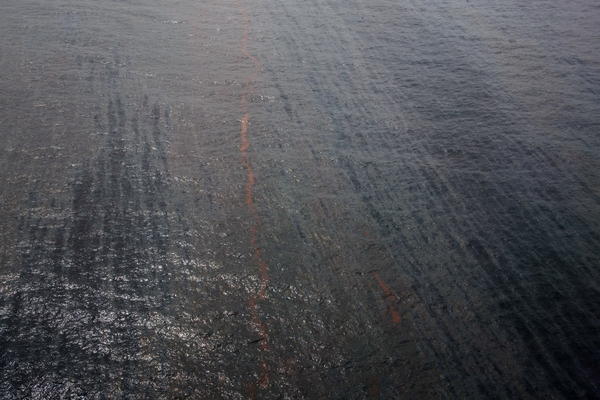By Mark Sappenfield, CSMonitor
From the first moments that the Deepwater Horizon oil rig sank last month, it has been apparent that the blooming Gulf oil spill has been an oil disaster unlike any other. But the full truth of that statement is perhaps only now beginning to become apparent.
The oil that can be seen from the surface is apparently just a fraction of the oil that has spilled into the Gulf of Mexico since April 20, according to an assessment the National Institute for Undersea Science and Technology. Significant amounts of oil are spreading at various levels throughout the water column, says the report, which was posted online a week ago but first published by The New York Times Saturday.
The research, combined with other emerging data, could fundamentally alter researchers’ understanding of the oil spill. It suggests that vastly more oil than previously reported could be spilling from the wellhead and the attached riser pipe that now lies crumpled on the seafloor like a kinked and leaking garden hose.
Moreover, it suggests that serious environmental degradation could take place in the open ocean, creating massive “dead zones” where no creature can live because of the lack of oxygen in the water. The spread of oil at all levels of the Gulf also could become a concern for shore communities in hurricanes, which stir up the water column as they come ashore.
Scientists looking at video of the leak, suggest that as many as 3.4 million gallons of oil could be leaking into the Gulf every day – 16 times more than the current 210,000-gallon-a-day estimate, according to the Times.
The depth of the problem.
The fact that the spill could possibly be so radically misunderstood nearly a month after it began speaks to the unique nature of this spill. In particular, it’s depth 5,000 feet below the ocean surface, makes it both unprecedented and difficult to study.
For experts, “most of their experience is with shallow-water spills that quickly bleed black goo onto beaches that are cleaned up relatively quickly,” says the Los Angeles Times.
That is clearly not what has happened in the Gulf, where shorelines have, so far, emerged relatively unscathed.
The nature of the oil in the Gulf oil spill could be relevant it is of a lighter grade than that in the Exxon Valdez spill, for example.
More relevant could be the dispersant that BP is applying to the oil at the source. BP officials have hailed the process as a success, noting diminishing oil at the surface. But the dispersant breaks the oil into smaller drops, which might instead be spreading throughout the water column, instead of rising to the surface.
It is not clear what this would mean environmentally, though past research indicates that oil can be trapped in the seabed for decades after oil on the surface is cleaned away.
Complicating projections.
It would, however, make predictions for the spill far more complex.
“We have no idea where the oil that isn’t reaching the surface is going,” James Cowan Jr., an oceanography professor at Louisiana State University, to the Los Angeles Times. “It could go everywhere.
The Gulf currents operate differently at different levels, making the exact location and spread of the oil at different depths hugely important to predictions of where it might end up. Indeed, the system so complex that in time, oil could be taken anywhere from the Mexican Coast to Florida’s Palm Beach, research suggests.
BP has so far rejected any efforts toward pinpointing the exact amount of oil entering the Gulf, saying that effort would detract from other containment efforts, such as the current effort to stopper one of the leaks with a siphon. But getting a more accurate sense of how much oil in leaking could be vital to trying to account for all of it, scientists say.









